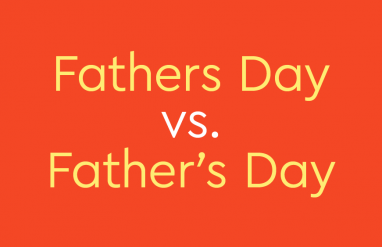Remember as kids when we used to look forward to summer break every year? Unfortunately as we get older, we don’t have this mandated chunk of time off from work every year.
But did we use to count down the days until school was out? Or did we used to look forward to the last day of school each year?
Despite the minor difference—literally just one letter—used to and use to are different. But given how similar they are, it’s understandable why the decision to add that D can be so confusing.
The phrase “used to” is a strange one. This unusual construction is a past habitual marker. As linguist John H. McWhorter points out in the Lexicon Valley podcast, “used to” is tricky because it isn’t about utilizing something. Instead, it’s about something you did habitually in the past.
How do you use used to?
This phrase used to refers to something you’re familiar with or accustomed to. So if there’s something that always happened or has become customary, it would be used to. For example: I’m used to sleeping with the lights on because I always fall asleep while reading. Or, She‘s used to my cooking and rarely complains anymore.
Then, there’s the version of use as a verb that refers to a habitual action—that is, actions frequently done as a habit. For example: she used to go to the library every day after school. Or I used to eat an apple on the way to school every morning.
This use is exclusively used in the past tense to express this action that no longer happens. So if you’re trying to say that the service was always great at the restaurant, you’d rely on used to and not use to. But we’ll get into that even more below.
One of the challenges of use, as we’ve already seen, is that is such a useful and highly used verb. As a noun and verb, use is recorded in early Middle English, and ultimately derives via French from the Latin ?sus (“act of using a thing”) and ?t? (“to use”). Use today is commonly used in the sense of utilize, which shares its Latin roots with use.
Historically, use had a number of senses that have fallen out of, well, use or familiarity today. One of them is “to practice habitually or customarily; make a practice of,” a sense which in part survives in the tricky construction used to.
How do you use use to?
It may help to remember that the majority of the time, the correct option is used to and not use to. However, there’s one exception to the rule: if the auxiliary forms did/didn’t is in the sentence, you would choose use to and not used to.
For example:
- Didn’t she use to play the flute?
- Did the doctor’s office use to be there?
So here’s a question: is this example below correct?
- I use to go to the store.
Although it may sound right, it isn’t. So why do we say it? Where some people fall into trouble is that use to might sound correct to the ear.
This could be because the sounds of D followed by T tend to blend together, and we process it as one unit “useto” or “useta.” So people have gotten used to hearing use to (see what we did there). So even if Their dad use to cook dinner nightly sounds right, in formal, standard writing this example should read Their dad used to cook dinner.
Expressions have also made use to seem more common. Although used to is a construction for something that’s accustomed or habituated to, “of no use to” is, too. For example: it’s of no use to offer help when she clearly doesn’t want it. Here, use is being used as a noun followed by an infinitive verb.
We know with enough practice, though, you’ll get used to using used to correctly.
If you’re used to learning about other commonly confused terms, you’re going to enjoy reading up on the uses of then and than. Feel free to alternate between that and this article on alternate vs. alternative.















